 Are you planning to sell products online to a foreign market? If so, you should think about providing users with the convenience of currency conversion on your site.
Are you planning to sell products online to a foreign market? If so, you should think about providing users with the convenience of currency conversion on your site.
Currency conversion allows your visitors to have the price of an international currency amount converted into their local currency at the point of sale. It also allows visitors to view the exact amount their card or PayPal account will be charged, displayed in their local currency.
The obvious benefit of providing currency conversion is that it lets visitors view and understand pricing in foreign countries in their own home currency, making it it easier for visitors to work out their costs and expenses.
If you are a WordPress user, it’s simple to add a currency conversion plugin to WordPress, allowing your visitors to easily determine the cost of your products.
Currencyr – Currency Converter For WordPress
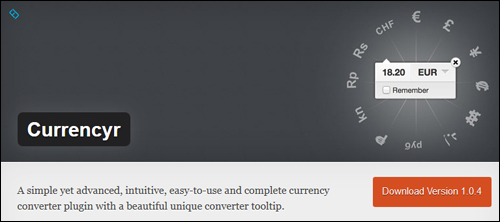
Currencyr is a simple, easy-to-use and complete currency converter WP plugin with a unique converter tooltip. And, it’s completely free!
Some of the features of this great plugin include the following:
- Inline converter
- Supports a number of exchange rates providers, such as Yahoo!, Open Exchange Rates & European Central Bank
- Support database cache driven for fast response
- Widgetized currency table and converter
- Supports integration with various online store plugins like WP-eCommerce and Easy Digital Downloads.
- Automatic local currency determination
- Full language translation support
Note: This plugin requires PHP 5.3.0 or later. Do not install this plugin if you are running an older version of PHP on your server. Ask your web host to update your PHP.
***
You can install the currency conversion plugin from your WordPress admin area by typing in “currencyr” into the Plugins search field and clicking “Install Now” …
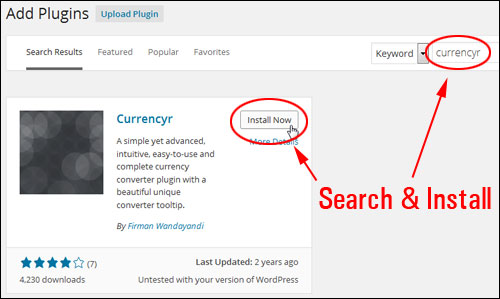
After installing and activating the plugin, you can visit the plugin’s settings by choosing Currencyr from your WP admin area …
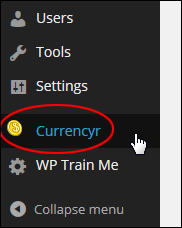
The plugin settings page provides a number of configuration options …
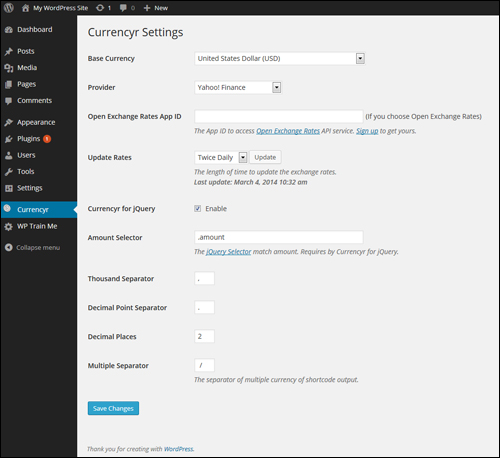
For example, you can select a base currency from the Base Currency dropdown menu. The default base currency is ’United States Dollar’ …
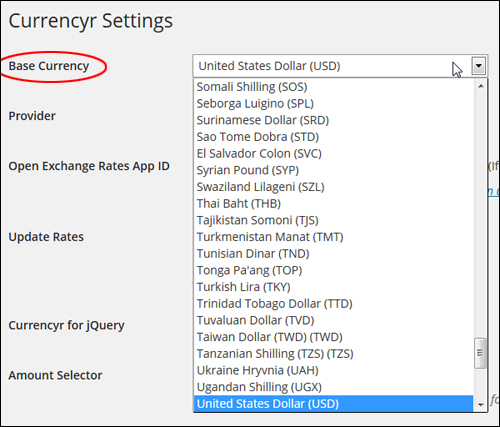
You can select a data provider from the dropdown menu in the ‘Provider’ section. The default option is Yahoo Finance, but you can also select another option, like European Central Bank or Google Finance …

Note: If you select ‘Open Exchange Rates’, you will need an API (Application Programming Interface) ID …

You can choose how often you would like the exchange rates to update by specifying an option from the ‘Update Rates’ drop-down menu …

The plugin uses jQuery, which allows web developers to add things like animation effects to web applications (like WordPress plugins).
Unless there is a reason to change the jQuery settings, you can just ignore this setting …

Edit the rest of the plugin settings to suit your needs and click Save Changes when done …
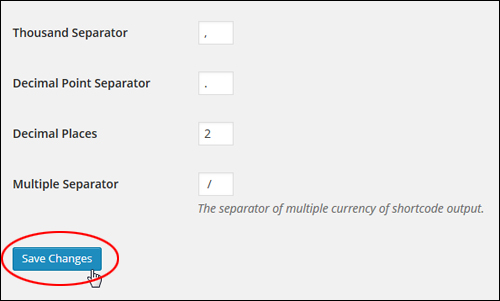
After you have configured your settings, you can add currency conversion to WP pages using shortcodes.
See the ‘Additional Plugin Notes’ section at the end of this tutorial to learn more about using currency codes (e.g. USD, AUD, JPY, etc …) with the Currencyr plugin.
Shortcodes
You can easily insert currency conversion into pages, posts and widgets without editing code using shortcodes.
Let’s take a look at some examples of currency shortcodes that you can add to WP pages and posts:
Let’s say that you sell goods on your site for a fixed amount (e.g. $175) in US Dollars (USD), and you want to show this conversion amount in British pounds (GBP) on your sales page.
To display this information, just add the following shortcode to your page content …

Note: You can also insert amounts in dollars and cents (for example, 188.35, 22.00, 295.75, etc …)
The screenshot below shows how the above shortcode should look after being added to your product page …
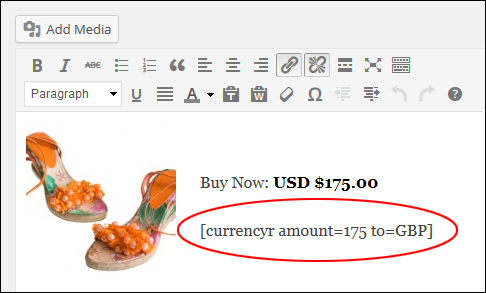
After your page or post has been published, the currency conversion will appear like this …
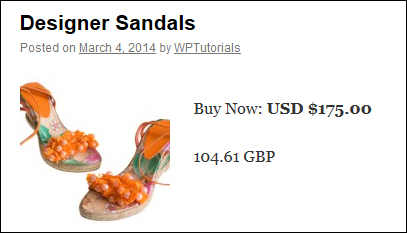
Using the same example, let’s now convert the same amount into multiple currencies.
To do this, use the shortcode shown below (add as many currency symbols as you like by using vertical pipes) …

The screenshot below shows how the shortcode looks when added to a page …

Once the content has been published, your currency conversion will then display as you can see in the example below …
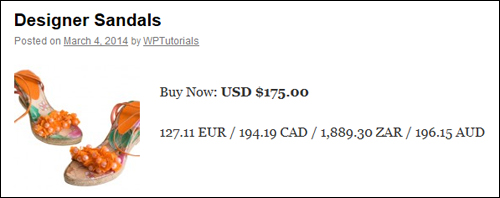
See the ‘Additional Plugin Notes’ section below to learn more about changing the currency separator symbol with this plugin.
Now, let’s say that you would like to use a different base currency than the one you have set as your default.
For example, say you have specified your default base currency as EUR and you have a section on your e-commerce pages targeted to customers in countries like Australia or Canada, you can change the base currency using the following shortcode …

The example below shows how the shortcode appears when added to a page …
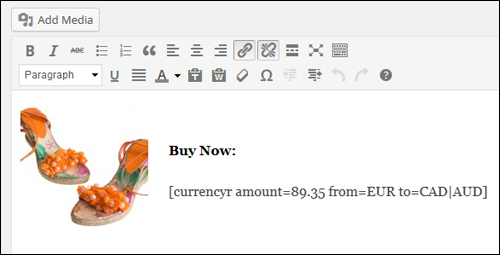
Once your post or page has been published, the currency conversion will then appear as shown in the example below …
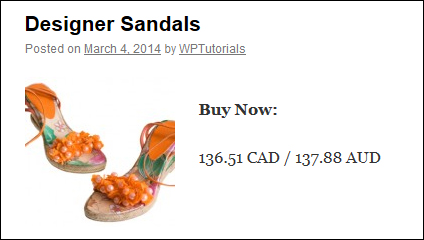
Plugin Widget
You can also insert currency conversion into your website or blog’s sidebar using a widget.
To add currency conversion to your sidebar, choose Appearance > Widgets in the WP user admin menu …
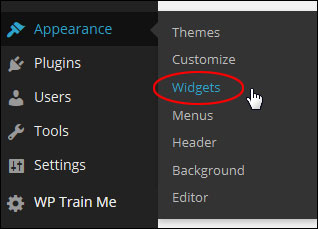
In the Widgets > Available Widgets section find the ‘Currencyr’ widget and drag it to an Active Widgets area …
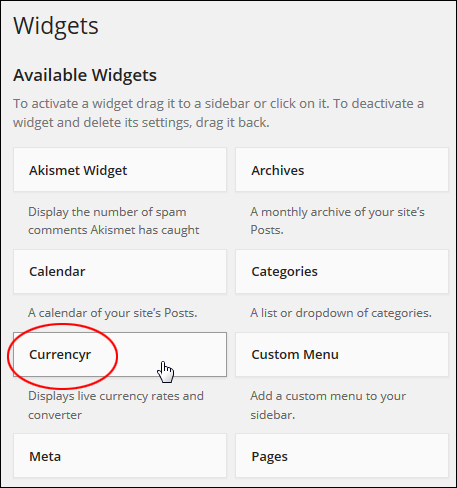
Configure the widget options as shown in the screenshot below (add the currency codes you want displaying on your widget separated by a comma), and click Save to save your settings …
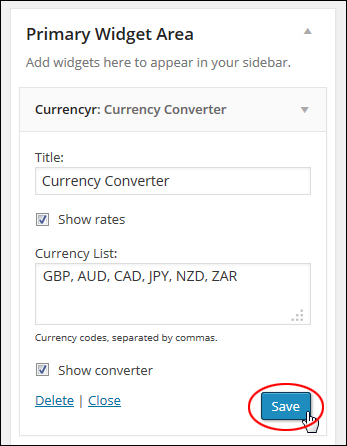
Your currency converter tool will now show on your website’s sidebar menu with the settings you have specified …
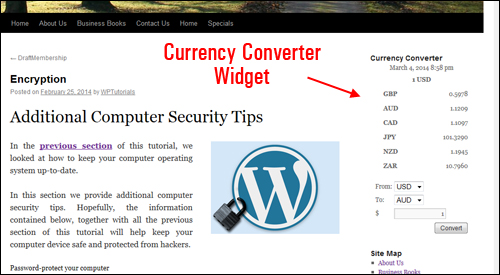
Additional Plugin Notes
Here are some additional notes and useful information about using the Currencyr plugin.
Currency Separator
The Currencyr plugin allows you to specify a symbol of your choice to display as the currency separator when using several currencies.
You can select a different symbol in the ‘Multiple Separator’ settings section.
So, for example, using the default symbol “/” (forward slash) …

Displays your currency values separated by a forward slash as you can see in the example below …
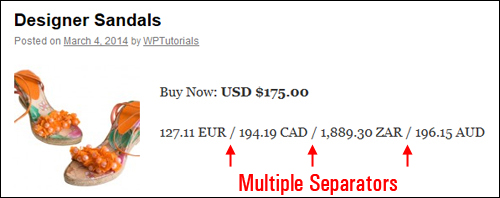
If you modify this symbol and update your plugin settings …

Your site visitors will see the new symbol being used as the currency separator …
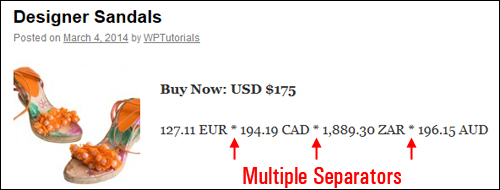
Integration With e-Commerce Software
As mentioned earlier, the plugin can be integrated with various WP-compatible e-commerce plugins like WooCommerce, Shopp and Easy Digital Downloads …
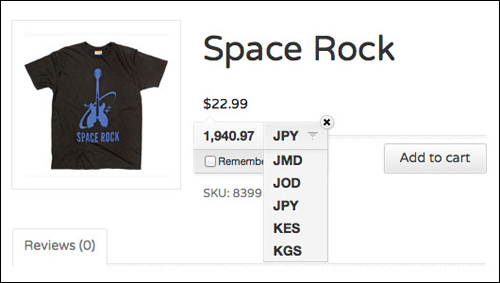
(image source: Currencyr plugin site)
And there you have it! Now you know how to easily add a currency converter to your e-commerce website.
To learn more about WordPress e-commerce plugins, see the tutorial below:
***
"If you're new to WordPress, this can stand on its own as a training course and will stay with you as you progress from beginner to advanced and even guru status." - Bruce (Columbus, Ohio)